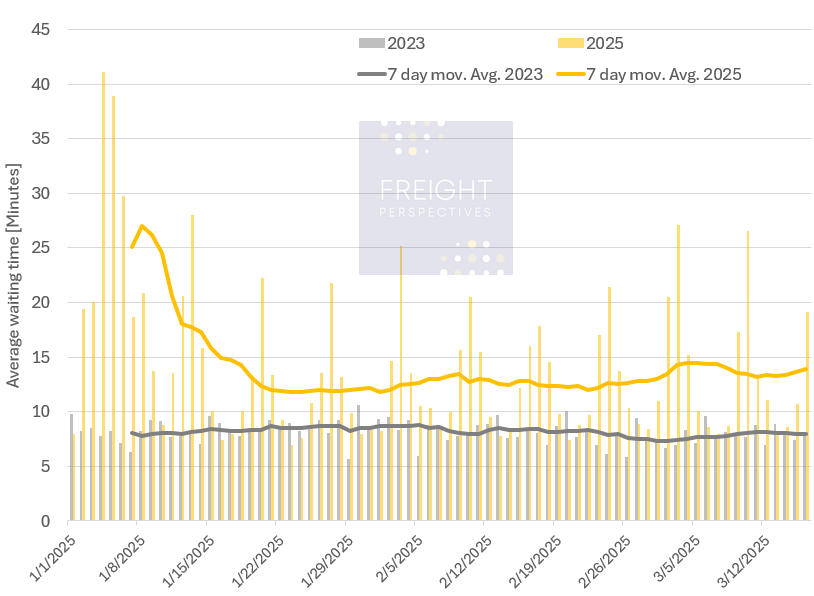Increased Waiting Times at German Borders
Market Monday - Week 12 - The new normal, due to prolonged controls at neuralgic crossing points from Poland
The introduction of stricter border controls in Germany on September 16th, 2024 has further strained the already reduced capacity in the transportation market. As of yesterday, March 16th, the measures were extended in duration once again, this time until mid-September for all German land borders. These measures have drawn significant criticism from the European Commission, neighboring countries and the logistics industry.
Six months after the implementation and recent prolongation, it’s time to revisit this topic and to evaluate its impact. We looked at the data within Transporeon Visibility solutions and found that the effect from the measures is tangible.
We investigated the four most important crossing points from Poland to Germany.
Zgorzelec - Görlitz
Slubice - Güldendorf
Kolbaskowo - Nadrensee
Jaglowice - Klein Bademeusel
The following chart displays the development of daily average waiting times at these borders for inbound traffic from Poland.
Border Waiting Times Inbound Germany from Poland
Source: Transporeon Real-Time-Visibility
The chart also contains a seven-day moving average, which reveals significantly increased delays in the first days of 2025. Comparing data from previous years helps to identify differences relative to 2023, when no governmental border control measures were in place. It shows a steady and measurable increase in 2025 compared to this baseline. It further reveals a recurring and cyclic weekly pattern in 2025 which was not present during the base period. Comparing the respective weekday’s waiting time highlights that Monday is the day with the highest waiting times. No surprise, as Sunday night and Mondays many trucks and drivers head back to Western Europe after a rest period at their homebases.
In depth analysis for longer periods and our last post on this topic from October 14th 2024, only weeks after the first prolongation of the border controls reveals that this anomaly has become the new normal at this border.
In essence, this development created new challenges for the transportation market and its stakeholders, resulting in decreased efficiency and productivity. While from an European perspective Western Europe is somewhat dependent on Eastern European truck capacity, this governmental measure of one country is reducing the available capacity and productivity for many more. In particular Eastern European carriers may face increased operational costs during current high market pressure times and may mitigate this effect with reduced service offerings and/or price increases.
Christian Dolderer
Lead Research Analyst
Transporeon




